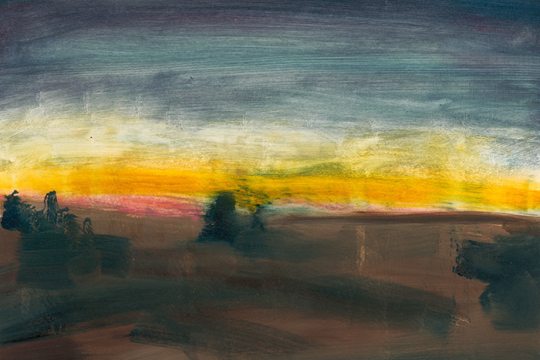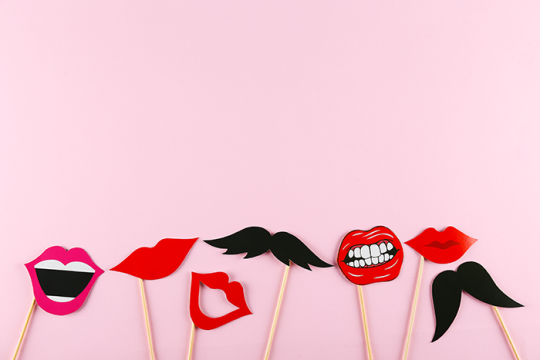One might not immediately associate Frank Stella (b. 1936), the American painter, sculptor, and printmaker noted for his work in the areas of minimalism and post-painterly abstraction, with a lyrical poem that concludes the traditional Passover meal. However, Stella’s powerful “Had Gadya” suite exemplifies the impact of Jewish sources on his work. This series is on exhibition at the Heller Museum at Hebrew Union College-Jewish Institute of Religion in New York through February 29.
Dating back to a 14th-century Provence prayer book, the lyrics of “Had Gadya” first appear in Aramaic and Yiddish in the Prague Haggadah manuscript of 1526. Whether this song is interpreted as a parable about the nations that persecuted the Jewish people throughout history or a metaphor for how an injury to one becomes an injury to all, the poetry of “Had Gadya” offered Stella the opportunity to develop a new form of abstract storytelling in which a small goat creates a chain reaction that extends to heaven.
Stella first discovered an artistic depiction of “Had Gadya” in the Russian-Jewish avant-garde artist El Lissitzky’s 1919 illustrations at the Tel Aviv Museum in 1981. Lissitzky’s illustrations were infused with Yiddish typography, shtetl imagery, and Russian suprematism. Stella was profoundly inspired by the minimalist narrative and abstraction through which Lissitzky expressed the victory of freedom over persecution and oppression that resulted from the Russian Revolution of 1917.
Stella’s “Had Gadya” conveys the conflicts between the goat, cat, dog, stick, fire, water, ox, butcher, and Angel of Death through the dynamic repetition, collision, intersection, and movement of cylinders, cones, grills, waves, graffiti-like scrawls, and motion-filled forms. It took Stella two years (1982-84) to create these complex works with lithography, linoleum block printing, silkscreen, and rubber relief with collage and hand-coloring.
Stella explained, "Abstraction... could have a geometry that had a narrative impact. In other words, you could tell a story with shapes. It wouldn't be a literal story, but the...interaction of the shapes and colors would give you a narrative sense."
“Had Gadya” is not the first Jewish theme found in Frank Stella’s art. Influenced by Nazi propaganda newsreels from World War II, Stella’s groundbreaking black pinstripe minimalist paintings from 1958 and 1959 were given titles the evoke the Holocaust. His 1960 painting “The Final Solution" used cruciform imagery, evoking the truncated core of the swastika. All these elements are echoed in his “Had Gadya” suite. In the early 1970s, he produced over 130 three-dimensional mixed media works inspired by photographs of Polish wooden synagogues destroyed during the Holocaust. Named after their annihilated communities, these works commemorate, in Stella’s words, “the obliteration of a culture.”
“Had Gadya” showcases Stella’s interest in Jewish history and cultural heritage. His evocation of successive episodes of strife ultimately concluding with redemption offers Stella, a Catholic, to express an aspirational message of justice in the face of destructive forces. Stella’s “Had Gadya” series exerts a compelling visual impact, calling our attention to suffering while showing that good ultimately prevails over evil in a radical vision of hope that remains timely, beckoning us to imagine a better future.
Frank Stella: “Had Gadya” (through February 29, 2024)
Opening reception: Thursday, September 7 at 5:00 – 7:00 p.m.; program at 6:00 p.m. ET
RSVP
Dr. Bernard Heller Museum
Hebrew Union College-Jewish Institute of Religion
One West Fourth Street, New York 10012
HUC Connect Webinar: Frank Stella – Jewish Themes
Tuesday, November 14 at 2:00 p.m. ET
Jean Bloch Rosensaft, Director, Dr. Bernard Heller Museum, HUC-JIR/New York
Register
Download the free Bloomberg Connects app to experience The Heller Museum online and listen to the audio guide for this exhibition
Tour the exhibition online at huc.edu.
Hear “Had Gadya” sung in many languages.
Visit the Heller Museum
Admission: Free
Hours: Monday-Thursday, 9:00 a.m. – 6:30 p.m.
For free guided tours and information, contact us via email at hellermuseum@huc.edu or call (212)-824-2218.
Visit the museum's web page for more info.
Related Posts

Sam Griffin: Aftermath

Seven Jewish Comedians Sparking Joy


